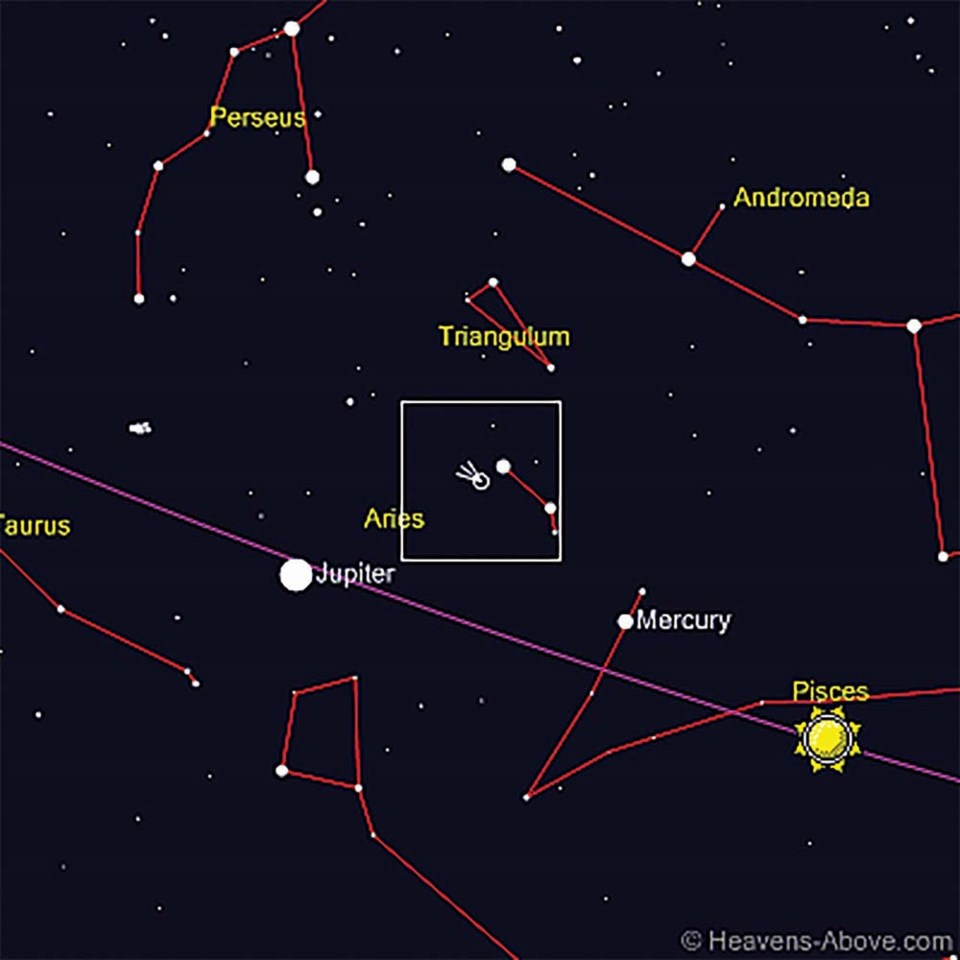The evening series of International Space Station passes wind up at the end of March and morning passes begin in late April for all the morning people out there. Check the Heavens-Above website for information on these.
Comet 12P Pons-Brooks is inbound from the outer solar system for its perihelion on April 21. Its brightness has grown from magnitude 6.5 as of Feb. 26 to about 4.8 at the end of March. This is barely naked eye visibility but the comet should brighten. Although I haven’t managed to spot it for a number of reasons, there are some beautiful astrophotos of it on the web, including some showing it with the Andromeda Galaxy as a backdrop – easy to find with your search engine of choice. The Heavens-Above website gives a finder chart for the comet as it moves and Jupiter is a very handy starting point for those trying to find it in the sunset.
On April 7, the moon does another close approach to Earth (perigee); it’s not quite as close as last month but we should still see some pretty large tidal ranges since it’s only one day before new moon. This, however, is not the big news about this new moon. Rather, it’s the coincidence that for us in North America, it happens when the moon is directly between us and the sun – when the moon’s position in its orbit intersects the Earth-sun orbital plane and we’re in the shade!
Granted, our location on the Sunshine Coast is only about 3,000 km northwest of the centerline of the eclipse path but you can’t have everything. The shadow touches down in the South Pacific heading eastward, swings northeastward and crosses into North America near Durango, Mexico, where it has its greatest duration. From there it proceeds across the U.S., just touches the southern limits of Ontario and Quebec then across New Brunswick, a little bit of PEI (is there any other kind?) and back into space just off southern Newfoundland. The path of totality just misses Toronto, Ottawa and Montreal, in which I take a little bit of perverse satisfaction. While the rest of Canada is forced to revolve around them, the moon, at least, is not.
From Sechelt, the partial eclipse begins at 10:43 April 8 with a maximum solar coverage of 16.2 per cent at 11:30. Similar to last October’s eclipse, if weather permits, the Sunshine Coast Astronomy Club will set up for public eclipse viewing along the Boulevard west of the Driftwood Inn towards Snickett Park. As usual, the correct precautionary approach to solar viewing means only look at the sun through appropriate filters or through a solar telescope. Under no circumstances look at the sun through any kind of binoculars, telescope or magnifying device unless it has been designed for solar viewing.
Continuing repairs to the Sechelt Library mean the SCAC monthly meeting will be held at the Sechelt Seniors Activity Center, 7 through 9 p.m., Friday April 12. The speaker will be Alison Man of UBC on the subject of galaxy evolution. Please check the club website at: sunshinecoastastronomy.wordpress.com/ for news.




